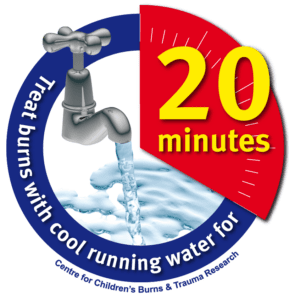Burn injuries
Trigger warning
This website includes people describing details of burn injuries. Some people might find reading about these experiences distressing.
In this section you can find out about the experiences of people who have been affected by scalds or burn injuries. We interviewed 36 people from across the U.K., including adults, young people, and parents of children with a range of burn injuries. Some of the people we interviewed had been burnt when they were children and others were burnt as an adult. We interviewed people online due to Covid-19 restrictions at the time.
We’d love to hear your feedback about this site. Please let us know your thoughts.
Experiences of Burn Injuries; a preview
First aid for burn injuries
Appropriate first-aid must be used to treat any burns or scalds as soon as possible. This will limit the amount of damage to your skin. For further advice on first-aid and burns treatment, search the NHS website. If you have a burn and have any questions or concerns about any aspect of your burn, its treatment, or support available, you should contact your GP.

First Aid:
- Run cool running water over the burn for 20 minutes
- Call for medical help (ring 999 or 111 in the UK)
- Cover the burn with loose strips of clingfilm or clean non-fluffy material to stop it getting infected
It is reported that an average of 250,000 people sustain a burn injury in the U.K. annually. Burns vary in size and severity, and any part of the body can be affected. In this site we use the terms ‘burns’ and ‘burn injuries’ to refer to scalds and burn injuries of any size. Sustaining a burn injury of any kind can be a traumatic, life-changing experience which can interfere with all areas of an individual’s life. Physical challenges can include pain and scar management. Self-esteem, social interactions, experience of education, career opportunities, friendships, and romantic relationships can all be impacted. For some, a burn injury requires adjusting to life with an altered appearance, which can be difficult.
You can start viewing topics by selecting from the list on the left. Here you can also find links to people’s profiles to hear more about their individual experiences, and a glossary with key terms. We hope you find the information helpful and informative.
The people we talked to chose how their interview appears on this website. Some chose for their interview clips to appear as video, whilst others chose to be featured as audio or text only.
You may also be interested in our section on life-changing injuries, which focuses on experiences of people who have sustained a range of different injuries.
This site is based on research conducted by a team at the Centre for Appearance Research at the University of the West of England, Bristol.
